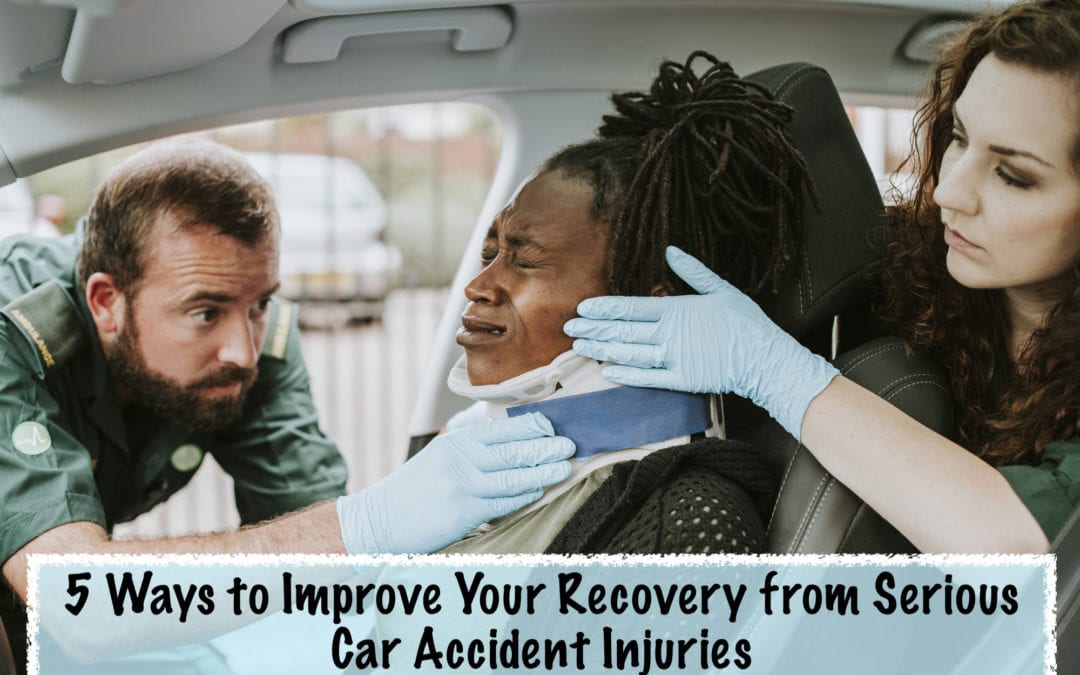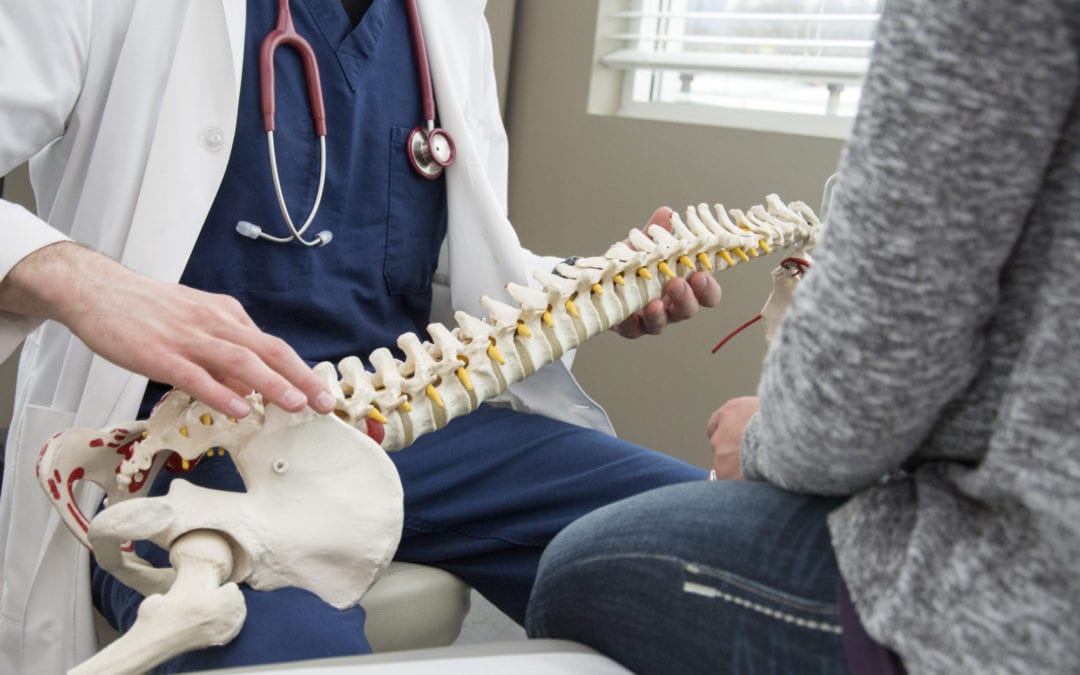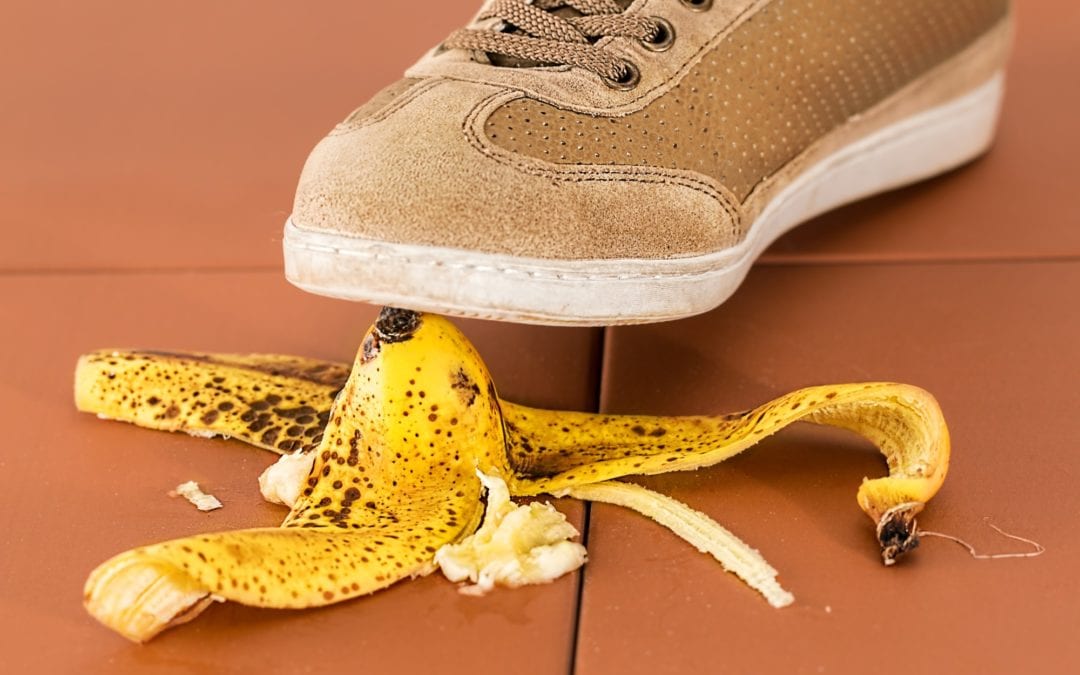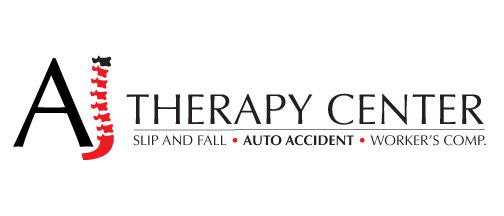
Car Accident
Have you recently been in a car accident that resulted in broken bones or other severe injuries? Are you looking for ways to heal fast and so that you don’t miss out on work or fun with friends and family?
If so, then we recommend following our tips to recovering from serious car accident injuries at a steady pace. The goal is to keep a constant eye on your health and change everyday behaviors that allow you to prevent further injuries.
Whether you suffered broken bones, whiplash, cuts, or a concussion, you need to address issues quickly and pick up techniques that allow you to feel better the next day. With our knowledge of injury recovery, you can put yourself in a better condition than you were before the car crash.
Here are five ways to improve your recovery from serious car accident injuries.
1. Visit the Hospital Regularly
You can never be too cautious when recovering from auto injuries, and our first tip is to visit your hospital on a regular basis. You need to have a doctor check on you to see the process of healing for bruises, broken bones, and other injuries you may have suffered.
Regular check-ups and practices such as physical therapy in St. Petersburg can also help you identify numbness, headaches, anxiety, depression, and other issues that would have gone undiagnosed otherwise. We also recommend keeping documents of each visit to get a better idea of your issues.
2. Focus on Rest and Hydration
Part of car accident recovery comes from what you don’t do, and you need to take advantage of your downtime in this case. Get rest every day in the healing process, especially if you have a job that requires more physical work.
You’ll also need to drink plenty of water while you heal to produce the cells needed to help those damaged during the accident. Since you won’t be taking part in too many activities, your body can focus on repairing damaged tissues.
3. Exercise when Possible
On the other handle, being active can help reduce car accident pain so that you recover quickly. If your injury wasn’t too severe or you’re wondering “Is there physical therapy near me?” you can get involved in activities that can speed up the process even more.
Speak to an injury doctor who can give you workout routines for when your body has reached a certain healing stage. Stretching, yoga, and certain lifting exercises can not only help you feel better throughout the day but also reduce boredom while you heal.
4. Develop a Diet
In addition to physical therapy in Tampa and other places, you can speed up recovery from car accident injuries by improving your diet. The goal is to focus on foods and drinks that are full of proteins and vitamins for improved functions.
Breakfasts can include eggs, oatmeal and orange juice, while lunches can focus on tuna or turkey sandwiches with salads as sides. Follow that up with chicken, salmon, or steak for dinner with broccoli and beans for dinner to reduce long-term pain after car accidents.
5. Take your Time
Some of you may be worried about your financial future because your accident keeps you from working. However, you must take your time recovering from serious car accident injuries if you want to get back to your job as quickly as possible.
Slowly moving into everyday activities will prevent further injuries, which can make the healing process longer. This will also help you get back to going out with friends or taking your family out on vacation sooner than later.
Bouncing Back from Serious Car Accident Injuries
Your ability to heal from serious car accident injuries depends on how much time and attention you invest in recovery. By analyzing your healing process on a regular basis, you can prevent further injuries and find new solutions.
Rest, hydration, diet, and exercise also help you improve your health while making the recovery process fun. You must also avoid rushing your recovery to obtain the best results.
With these tips, you can get back into shape that will allow you to be productive and have fun.
For more of our recovery expertise, check out our guides today to find ways to feel better than ever.

Car Accident
Did you get a broken hip from a car accident?
The recovery process can be a long one, but there are things you can do to aid in the healing process. If you’re worried that you’ll have trouble walking, check out these five ways to recover from a hip fracture.
1. Focus on Your Nutrition
When you break a hip and begin the recovery process, nutrition may be the last thing you think of, but it’s an important aspect. 4
You will want to ensure that you’re getting enough protein, calcium, and vitamin D. Protein will help you build up your muscles, while calcium and vitamin D will help strengthen your bones and improve recovery.
2. Get Moving
You may wonder if you can still walk with a broken hip, but staying sedentary is the last thing you need to do. You will want to start slowly and gradually increase the weight you put on your body as you go.
Exercising will help your bones gain strength and in order to get stronger, they need to be used. Follow your doctor’s orders on what exercises you should do and what you should avoid. You want to gain strength without overexerting yourself and causing further injury.
3. Follow Doctor’s Orders
A very important tip to recovering from a broken hip is to follow your doctor’s orders. It’s easy to get lax when it comes to this, but it’s a vital part of the recovery process. Take all the medication prescribed by your doctor to aid in pain relief and recovery.
You want to be sure that you fully understand any post-op instructions from your doctor. Always ask any questions you have to ensure that you get the best care possible.
4. Wear Compression Socks
Blood clots are a potential risk following hip surgery. If left untreated or undiscovered, they can also be life-threatening. A great way to prevent blood clots is to wear compression socks following surgery. You will want to wear them every day until your doctor says to stop.
5. Prepare Your House for the Recovery Process
After you’ve received hip fracture treatment, you will want to make sure that your home is properly prepared for optimum recovery. You don’t want to come home, trip on a rug, and then end up back in the hospital.
A few things to think of when prepping your home include:
- removing any throw rugs that you could trip over
- move electrical cords
- rearrange furniture so you can move freely
- wear sturdy shoes to prevent slipping
- install rails in the shower and next to the toilet if necessary
Making these simple changes to your home can prevent slips and injuries.
Recovering from a Broken Hip
Recovering from a broken hip can be a stressful process. However, with the proper care and performing recovery steps, you can be back to your old self again soon.
Want to stay up to date with the latest news and trends in health and wellness? Check out our wellness blog for more great tips and advice.

Car Accident
Whiplash can be extremely painful, and the symptoms may take a few days after an accident to show up. About 25 percent of people who suffer from whiplash experience chronic pain after the injury.
Wondering what causes whiplash and how to treat it? If you are dealing with pain from whiplash or a neck sprain, keep reading to learn what causes it and how to relieve pain.
What is Whiplash?
Whiplash is an injury to the neck caused by rapid back-and-forth movement. It gets its name because it’s like cracking a whip.
The most common cause of whiplash is from a rear-end car accident. The injury can also happen from physical abuse, sports accident, amusement park rides, falling off a bicycle, horse riding accidents, or any other forceful trauma.
Women can be more susceptible to whiplash injuries than men. Experts believe it may be because men’s neck muscles tend to be a little stronger.
What Causes Pain?
When a person is struck forcefully from behind, the person’s body pushes forward and the head stays back for a split second. This makes the head rock up and back, which stretches and can tear tendons, ligaments, and muscles.
These muscles then contract and move the head forward—sometimes too far.
Whiplash can be caused by collisions in any direction, not just behind.
Symptoms of Whiplash
The most common symptoms of whiplash include headaches, stiffness, and neck pain. Typically people get better within a few weeks of treatment, but some people experience long-term complications.
Sometimes whiplash is called a neck strain or neck sprain. Symptoms of whiplash typically begin about 24 hours after an injury and include:
- Decreased range of motion in the neck
- Fatigue
- Dizziness
- Pain when moving neck
- Neck stiffness and pain
- Numbness or tingling in arms
- Tenderness or pain in upper back, shoulder, or arms
- Headaches
- Muscle spasms
Some people may even have issues concentrating, ringing in ears, memory problems, and sleep disturbances.
Treatment for Whiplash
Treatment helps alleviate the pain and stiffness of the neck. It also will focus on healing the tendons, muscles, and ligaments. There are a few things you can do at home to help alleviate your neck pain.
Use an ice pack to help with swelling and inflammation. Put the ice pack on for about 10-30 minutes at a time.
Take medications for pain like ibuprofen or acetaminophen. Make sure you consult with your doctor before taking pain medications, especially if you have other medical conditions.
You may need to do some physical therapy to help strengthen and your neck. The physical therapist may use heat, ice, and electrical stimulation to reduce pain. You will get some exercises to do at home.
If you have muscle spasms, your doctor may also prescribe muscle relaxants. Typically, it’s best to take these before bed because they can make you drowsy.
Your doctor may also recommend wearing a soft foam collar to immobilize the neck for periods of time. You should wear the collar for no more than 3 hours at a time.
Need Help with Whiplash or Neck Sprain Pain?
If you are suffering from neck pain after an accident, you can follow the above tips to alleviate pain. If you need more help to deal with whiplash or neck sprain pain, book an appointment online for a free consultation for physical therapy in Tampa and St. Petersburg.

Car Accident
Slips and falls bring more people into the emergency room than any other ailment, causing about 8 million visits each year. The senior citizen population suffers most from this type of accident.
If you fall, identifying the cause of your pain can help you take the proper course of action. Learn about the most common slip and fall injuries here!
Most Likely Slip and Fall Injuries
If you or a loved one slip or fall, you may need professional physical therapy. You should know what indicates a more serious injury.
Keep reading for the most common slip and fall accidents that require assessment.
Back Injuries
A slip and fall accident can very likely result in a back injury. Falling on your back can cause a slipped disc or chipped vertebrae.
A slipped disc causes back pain that extends into the limbs, pain that worsens after sitting or standing, and muscle weakness. Chipping the vertebrae creates sudden pain that eases while laying on your back and can lead to height loss, limited mobility, and deformity.
If you slip but do not actually fall, you may still suffer an injury. Slips can cause twists of the vertebrae and ligaments that lead to debilitating strains or sprains.
These injuries can cause muscle spasms, pain that worsens with movement, and a decreased range of motion. Low back pain is the top cause of missing work and should not be ignored.
Back injuries can lead to serious consequences that result in long-term pain, nerve damage, and loss of skeletal and muscle function all over the body. Physical therapy reduces these effects and can help you lead a normal life following a back injury.
Hip Fractures
The CDC reports that hip fractures account for 95% of fall injuries. This especially occurs with senior citizens who fall on a flat, level surface in their home.
This injury causes sudden pain in the hip and groin region, inability to move the leg or bear weight, swelling, bruising, and stiffness. It requires surgery, 12 weeks of recovery, and months of physical therapy to walk normal again.
Wrist Injuries
When people slip and fall, they instinctually reach out their hands to catch themselves. Even if you succeed in catching your fall, this can result in a wrist injury.
The wrists contain small bones and ligaments that can easily suffer on impact. If you notice severe wrist pain, swelling, and/or difficulty using your hand, your injury requires medical attention.
You probably do not realize how often you use your wrist unless you suddenly cannot. A physical therapist can help you regain range of motion to get back in the swing of things.
Concussions
Slipping backward or falling from heights can cause you to smack your noggin. Hitting your head requires close observation for the next day or two, even if you seem fine at first.
Head injuries can lead to difficulty concentrating, sleeping, talking, and participating in other physical and mental activities. If you suffer a head injury after a fall, physical therapy can help you regain your coordination and balance.
Physical Therapy Following a Fall
Nobody plans for slip and fall injuries. But, you should set up a recovery plan that will give you the quickest, most complete recovery.
Physical therapy does just this. Attempting it on your own can lead to further injury, so you should call a professional who can navigate your recovery safely and effectively.
You may ask, Where is there a physical therapist near me? Check out our locations and schedule an appointment today!

Car Accident
Have you recently suffered a fracture or broken bone from a car accident? Are you still in the recovery process and want to get back into good health as quickly as possible?
If so, then you should be aware of car accident injuries that do a better job at hiding. The shock of such a situation can result in injuries that you can have a delayed response to and may go undiagnosed.
With our knowledge of physical therapy, you will be able to identify these injuries quickly and avoid short and long-term health problems.
Here are car accident injuries that often go undiagnosed.
1. Headaches
One injury that should motivate you to seek services such as physical therapy in St. Petersburg is a headache. This injury can happen even if your head wasn’t hit in the accident, as impacts on the rest of the body can affect the movement of your head.
Headaches can range from mild to severe and may be a sign of concussions and other more serious injuries for the head and brain. We recommend car accident physical therapy immediately to address head trauma, no matter how much damage you took in the car.
2. Whiplash
Whiplash is among the invisible injuries that a headache can indicate without services such as physical therapy in Tampa. This injury occurs when your head is thrown forward and backward from the impact of the accident.
Among the most common symptoms of whiplash are tightness and/or pain in the neck and shoulders. Ask yourself “Is there physical therapy near me?” so that you can take care of affected areas to prevent further issues such as spinal injuries.
3. Abdominal Pain
Another area of the body that can be affected by a car accident is the abdomen. We advise addressing abdominal pain right after an accident because it can be a sign of internal bleeding.
Other signs of internal bleeding include bruised or purple skin, dizziness, fainting, and lightheadedness. With services such as physical therapy in Tampa, you can treat abdominal pain before it leads to a life-threatening situation.
4. Numbness/Tingling in Limbs
Car accident physical therapy can also help treat issues such as numbness and tingling in the limbs. Herniated disks and similar injuries can lead to these feelings by pressing on spinal nerves.
In this case, numbness and weakness can occur in the arms, legs, and hands, making it hard to accomplish everyday tasks. An x-ray can help you spot herniated disks or other problems that can be causing this numbness.
5. Emotional Stress
Car accident injuries can cause more than just physical harm, as your emotional state may be affected. Some people may experience anxiety, depression, post-traumatic stress disorder (PTSD), and other psychological effects.
Those involved in accidents can experience these effects from physical injuries or just being involved in such a severe situation. Massages, exercise, heated treatment, and other forms of physical therapy can help patients avoid personality changes such as difficulty controlling emotions and changes in behavior.
Our Take on Car Accident Injuries
Some car accident injuries are harder to detect because of a lack of physical evidence. This makes them just as dangerous because they can go undiagnosed.
Some injuries affect certain areas such as the head or abdomen, while others can affect the whole body. Physical therapy can help you tackle these problems when you seek it immediately after an accident.
With this guide, you can restore your health and enjoy a comfortable life with loved ones.
For more of our health expertise, schedule an appointment today so that you can learn how to recover quickly and efficient after an accident.

Car Accident
It might be hard to believe, but the shoulder is the most flexible joint in your body.
It’s also not just one independent joint. Several moving parts connect your shoulder to your arm, back, neck, and impact all your upper-body movement.
Your shoulders are a big deal! Take a moment to understand shoulder anatomy and causes of aches and pains.
A Closer Look at Shoulder Anatomy
You shoulders are made of up three major bones:
- Humerus: This is the upper-arm bone, which is also the largest bone in your arm. The humerus connects to your scapula and clavicle.
- Scapula: This is your shoulder blade. This bone connects to your collarbone.
- Clavicle: The collarbone rests at the front of your shoulder and extends to your shoulder blades.
These three bones all meet to create some important joints:
- Glenohumeral: This is a ball-and-socket joint that allows you to move your arm in circular motions, over your head, and away from your body.
- Acromioclavicular: This is the upper-most joint in your shoulder. It also helps you with upward arm movements.
- Sternoclavicular: This joint allows the clavicle movement.
How Does the Shoulder Joint Work?
A collection of cartilage, tendons, muscles, and ligaments surrounds the bones and joints to help you move your arms and perform lifting, pulling and other motions.
Essentially, the humerus fits into your shoulder blade through the glenohumeral joint. The shoulder muscles and tendons that keep this joint intact are called your rotator cuff.
Your rotator cuff helps stabilize your shoulder and provide all the range of movements you perform daily.
What Can Cause Shoulder Pain?
Since the shoulder is so flexible, it’s also one of the most injury-prone areas in the body.
Repeated use and movements can lead to shoulder and upper arm pain, instability, and inflammation. These symptoms may form gradually and over time, which can worsen the pain and long-term impact of injuries.
Common Types of Shoulder Injuries
People can experience a wide range of shoulder issues depending on activity level or other health conditions like arthritis.
Generally, inflammation and instability are the underlying reasons for a variety of shoulder problems. But the list of shoulder injuries is actually quite long. Here are a few common conditions.
Separated Shoulder
People who experience a fall or other trauma can experience a tear in the ligaments that hold the collarbone and scapula together.
Tendinitis
This is a result of overuse which leads to inflammation in one of the tendons in your rotator cuff.
Torn Rotator Cuff
In some cases, people can experience a tear in a tendon or muscle surrounding the upper arm bone. This is called a rotator cuff tear.
Frozen Shoulder
This is a result of increased inflammation in your shoulder. As it worsens, your shoulder becomes stiffer and arm movements become more painful and limited.
Physical therapy can help address weaknesses and injury causes. With targeted treatment and exercises, you can improve shoulder mobility issues and regain strength.
Care for Your Shoulders in Tampa
If you’re in doubt about the severity or type of shoulder injury you’re experiencing, don’t wait to ease your pain.
Seek reliable physical therapy in Tampa and be on your way toward recovery. Contact us for a free consultation today.






